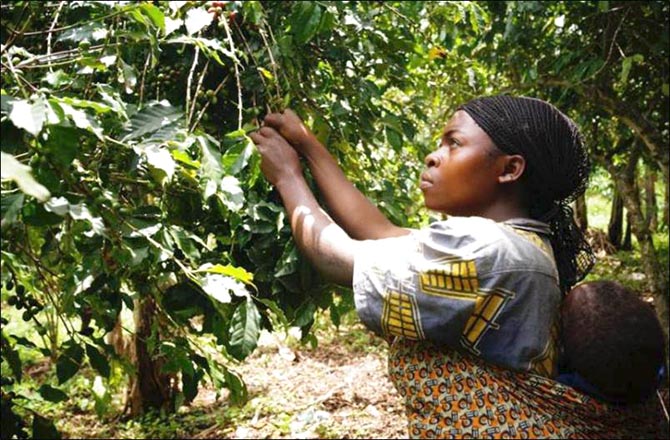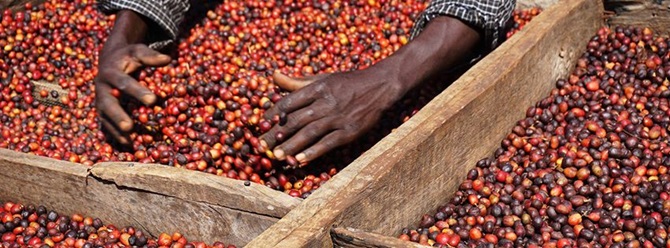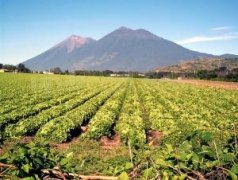Ethiopia's organic potential stock! The Guji producing area that is not inferior to Yega Xuefei.

For professional baristas, please follow the coffee workshop (Wechat official account cafe_style)
Previously, we introduced Ethiopia's Yega Snow Coffee, which has become the target of international boutique coffee fans because of its special floral fragrance and lemon and citrus flavor, which in turn has led to an increase in the domestic demand market in Ethiopia. In the case of everyone scrambling for it, it is conceivable that the price of Yega snow coffee is becoming more and more expensive (how can we afford it? ~) therefore, the response is that everyone is looking for a hidden version of coffee that is slightly less famous, but the flavor and quality is also comparable, and this is how the Guji producing area was discovered. Today, let's talk about the Guji producing area.

The Guji producing area, located in the southeast of the well-known Yega Snow production area, is the highest in Ethiopia, with an average elevation of more than 1800 meters. The significant temperature difference between day and night makes the growth of coffee beans more complete and sweeter; with fewer insect pests, coffee farmers can grow in an all-organic way, coupled with their own fertile black soil, so that Guji has all the local conditions to produce high-quality coffee. During the growing season, small farmers pick the ripe red berries near their homes and send them to the treatment plant and place them on a well-ventilated African scaffolding to control the temperature and fermentation degree. After removing the pulp, the water content is reduced to between 11.5% and 12%. In the past, under the ECX trading system, Gu Ji only belonged to the producing area under the flavor of Sidamo A (figure 1). But because the flavor is so unique and eye-catching, ECX has to separate Guji into a unique flavor (figure 2).

In view of the disadvantages of the traditional solarization method, the water washing method comes along with it. Use a peeling machine to separate most of the pulp from the coffee beans, then guide the shelled beans to a clean sink, soak them in water and ferment to completely remove the residual pulp layer. In the past (about five years ago), washing was often the first choice for good coffee bean treatment. Through water treatment, unripe beans and defective beans are selected because of buoyancy, and the fermentation process is easier to control, so the flavor is not mixed like sun beans, but shows obvious acidity, complexity and cleaner (without any negative flavor, such as astringency or sharpness). But it is also because it is too "clean" and the richness of the flavor is a little weaker.
The reason why the Guji producing area can stand out and become a new bright spot in the eyes of boutique coffee fans, in addition to its own geographical advantages, high-quality farmers and changes in the division of ECX, the micro-producing area of Shakisso (sometimes translated as Shakiso) also plays an important role. Shaquiso's coffee belongs to the Guji producing area, and the flavor is of course quite unique. Coffee Review won a brilliant score of 95 points in April 2014, which has already attracted the attention of the market to further enhance the potential of the market. It is no exaggeration to say that Gu Ji is a rising star of Ethiopian coffee.
Important Notice :
前街咖啡 FrontStreet Coffee has moved to new addredd:
FrontStreet Coffee Address: 315,Donghua East Road,GuangZhou
Tel:020 38364473
- Prev

The Origin of Sidamo Coffee in the Great Rift Valley of East Africa: an introduction to the description of washed Sidamo flavor
The world-famous East African Rift Valley has long been known as the birthplace of mankind, but also recognized as the birthplace of coffee. The Sidamo region of Ethiopia happens to be located in this lush and mysterious canyon. As the birthplace of coffee, Ethiopian coffee has an unforgettable unique aroma and distinctive and insurmountable quality. Here
- Next

Is there a G1 grade for the Ethiopian sun grading? Is there a G1 grade only for washing?
Professional barista communication Please follow the coffee workshop (Wechat official account cafe_style) do you know the coffee grading in Ethiopia, only the washing treatment can have G1 at the earliest? But how do you see more and more people selling Ethiopian suntan G1 coffee beans now? First of all, let's take a look at the grading of Ethiopian coffee beans. In the ECX trading system
Related
- Detailed explanation of Jadeite planting Land in Panamanian Jadeite Manor introduction to the grading system of Jadeite competitive bidding, Red bid, Green bid and Rose Summer
- Story of Coffee planting in Brenka region of Costa Rica Stonehenge Manor anaerobic heavy honey treatment of flavor mouth
- What's on the barrel of Blue Mountain Coffee beans?
- Can American coffee also pull flowers? How to use hot American style to pull out a good-looking pattern?
- Can you make a cold extract with coffee beans? What is the right proportion for cold-extracted coffee formula?
- Indonesian PWN Gold Mandrine Coffee Origin Features Flavor How to Chong? Mandolin coffee is American.
- A brief introduction to the flavor characteristics of Brazilian yellow bourbon coffee beans
- What is the effect of different water quality on the flavor of cold-extracted coffee? What kind of water is best for brewing coffee?
- Why do you think of Rose Summer whenever you mention Panamanian coffee?
- Introduction to the characteristics of authentic blue mountain coffee bean producing areas? What is the CIB Coffee Authority in Jamaica?

